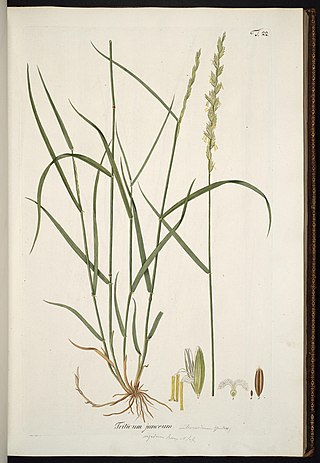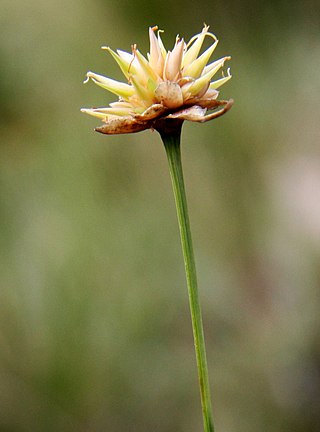
Royal Botanic Gardens, Kew is a non-departmental public body in the United Kingdom sponsored by the Department for Environment, Food and Rural Affairs. An internationally important botanical research and education institution, it employs 1,100 staff. Its board of trustees is chaired by Dame Amelia Fawcett.

Taxus is a genus of coniferous trees or shrubs known as yews in the family Taxaceae. Yews occur around the globe in temperate zones of the northern hemisphere, northernmost in Norway and southernmost in the South Celebes. Some populations exist in tropical highlands.

Buddleja is a genus comprising over 140 species of flowering plants endemic to Asia, Africa, and the Americas. The generic name bestowed by Linnaeus posthumously honoured the Reverend Adam Buddle (1662–1715), an English botanist and rector, at the suggestion of William Houstoun. Houstoun sent the first plants to become known to science as buddleja to England from the Caribbean about 15 years after Buddle's death. Buddleja species, especially Buddleja davidii and interspecific hybrids, are commonly known as butterfly bushes and are frequently cultivated as garden shrubs. Buddleja davidii has become an invasive species in both Europe and North America.

Trachycarpus is a genus of ten species of palms native to Asia, from the Himalaya east to eastern China. They are fan palms, with the leaves with a bare petiole terminating in a rounded fan of numerous leaflets. The leaf bases produce persistent fibres that often give the trunk a characteristic hairy appearance. All species are dioecious, with male and female flowers produced on separate plants although female plants will sometimes produce male flowers, allowing occasional self-pollination.

Boswellia is a genus of trees in the order Sapindales, known for its fragrant resin. The biblical incense frankincense is an extract from the resin of the tree Boswellia sacra, and is now produced also from B. frereana. Boswellia species are moderate-sized flowering plants, including both trees and shrubs.

Elattostachys is a genus of about 21 species of trees known to science, constituting part of the plant family Sapindaceae.
Anisophyllea globosa is a tree of Borneo in the family Anisophylleaceae. The specific epithet globosa is from the Latin meaning "round", referring to the fruits.
Freziera tomentosa is a species of flowering plant in the family Pentaphylacaceae. It is found in Colombia, Ecuador, Peru, and Venezuela.

Myristica globosa is a species of plant in the family Myristicaceae. It is found in parts of Melanesia and Australia.
Unonopsis spectabilis is a species of plants in the custard apple family Annonaceae. It is endemic to Venezuela.
Vatica globosa is a tree in the family Dipterocarpaceae, native to Borneo. The specific epithet globosa means "spherical", referring to the nuts.

Buddleja globosa, also known as the orange-ball-tree, orange ball buddleja, and matico, is a species of flowering plant endemic to Chile and Argentina, where it grows in dry and moist forest, from sea level to 2,000 m. The species was first described and named by Hope in 1782.

Airopsis is a genus of southern European and northern African plants in the grass family.

Juncus gerardii, commonly known as blackgrass, black needle rush or saltmarsh rush, is a flowering plant in the rush family Juncaceae.

Wolffia globosa is a species of flowering plant known by the common names Asian watermeal and duckweed. It is native to Asia and is found in parts of the Americas and Africa, where it is an introduced species. It grows in mats on the surface of calm, freshwater bodies, such as ponds, lakes, and marshes. It is a very tiny, oval-shaped plant with no leaves, stems, or roots. The body of the plant, a transparent green frond, is less than a millimeter wide. In one human experiment, processed W. globosa was reported to provide dietary protein and vitamin B12.

Thinopyrum junceum, commonly named sand couch-grass, is a species of grass in the family Poaceae. It is found in Europe and temperate Asia, and grows from rhizomes. They have a self-supporting growth form and simple, broad leaves. Individuals can grow to 52 cm tall.

Afroguatteria is a small genus of vines in the family Annonaceae, native to Cabinda, Camaroon and Zaire in west Africa.

Rhynchospora globosa, known by the Spanish common name of estrellita de sabana, is a member of the sedge family, Cyperaceae. It is a perennial herb, found throughout the tropics of Central and South America. The variant R. globosa var. tenuifolia is endemic to Cuba.
Afroguatteria bequaertii is a species of plants in the custard apple family Annonaceae. It is endemic to the Democratic Republic of the Congo.
Afroguatteria discostigma is a species of plants in the family Annonaceae. It is endemic to Camaroon.













